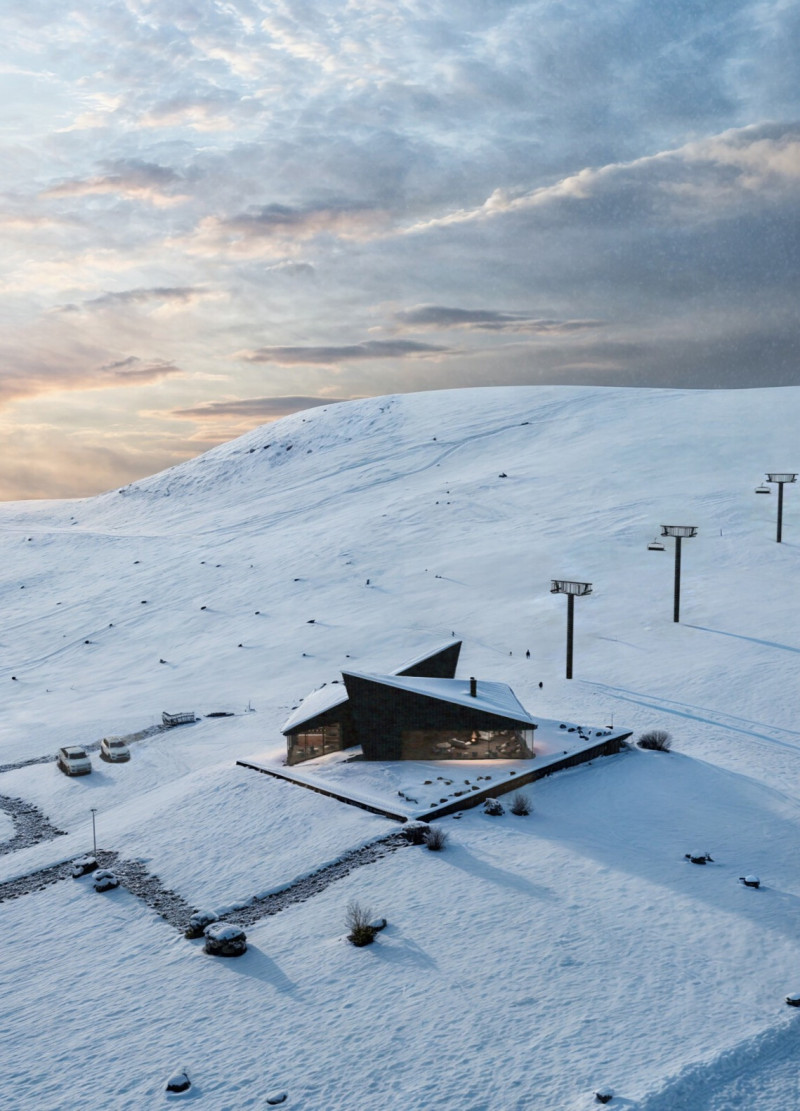5 key facts about this project
At its core, the project serves as a multi-functional hub, accommodating various activities while promoting connectivity among users. This versatility is evident in the open floor plan, which integrates seamlessly various spaces designated for gathering, leisure, and work. The thoughtful arrangement of these spaces allows for natural circulation and encourages spontaneous interactions, reinforcing the sense of community the design seeks to establish.
An important aspect of the project is its materiality. The use of durable and sustainable materials reinforces the project's commitment to environmental responsibility while also enhancing its visual identity. Concrete is predominantly used for structural elements, providing stability and longevity, while well-selected wood infuses warmth and a sense of comfort throughout the interiors. Glass is strategically employed to maximize natural light, forging a direct connection between the indoor spaces and the outside world. This transparency not only enhances the aesthetic quality of the architecture but also encourages occupants to engage with their surroundings, blurring the lines between interior and exterior.
In terms of unique design approaches, the project differentiates itself through its integration of green technologies. The architects have thoughtfully incorporated features such as green roofs and rainwater harvesting systems, which promote sustainability and reduce the building's ecological footprint. These environmental strategies create an opportunity for the architecture to engage with its surroundings dynamically, adapting to seasonal changes and improving energy efficiency.
The architectural design also responds to the local climate, with overhangs and shading devices that mitigate heat gain while ensuring ample daylighting. This design consideration enhances comfort for the users while also contributing to the building’s energy performance. Additionally, the exterior façade features a careful selection of materials and patterning that resonates with the historical context of the area, establishing a conversation between the new and the established.
The project emphasizes the importance of outdoor spaces, incorporating landscaped areas that encourage social interaction and serve as extensions of the indoor environment. The terraces and gardens are designed to offer respite from the bustling urban life, providing places for relaxation and contemplation. These outdoor areas not only enhance the overall aesthetics of the architecture but also promote biodiversity and create a more inviting atmosphere for both occupants and visitors.
Throughout the design process, the architects have employed innovative techniques in creating the architectural plans and sections. These documents reflect a commitment to detail and clarity, providing insights into the spatial relationships and material choices that define the project. The careful consideration of architectural designs showcases a narrative of modern living that accommodates diverse needs while remaining grounded in the principles of good design.
In conclusion, this architectural project embodies a thoughtful synthesis of function, sustainability, and aesthetics. Its design addresses contemporary challenges while celebrating its geographical context and fostering a sense of community among its users. For those interested in a deeper understanding of the project, examining the architectural plans, sections, and other architectural ideas may provide valuable insights into the conceptual underpinnings that drive this engaging and functional design. Explore the presentation of the project to appreciate the full scope of its architectural relevance and innovation.


 Amirata Ebrahim Khalili,
Amirata Ebrahim Khalili,  Nida Yilmazer
Nida Yilmazer 























